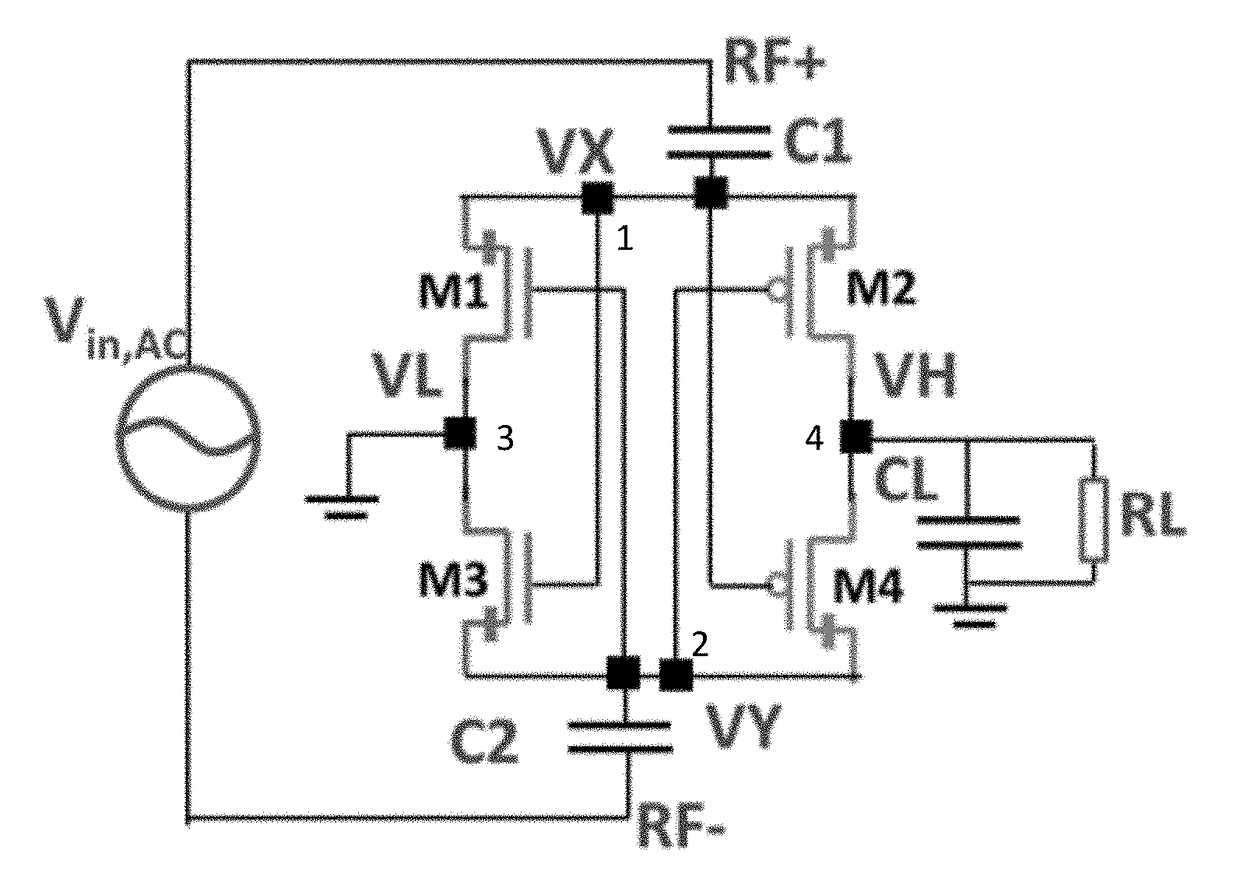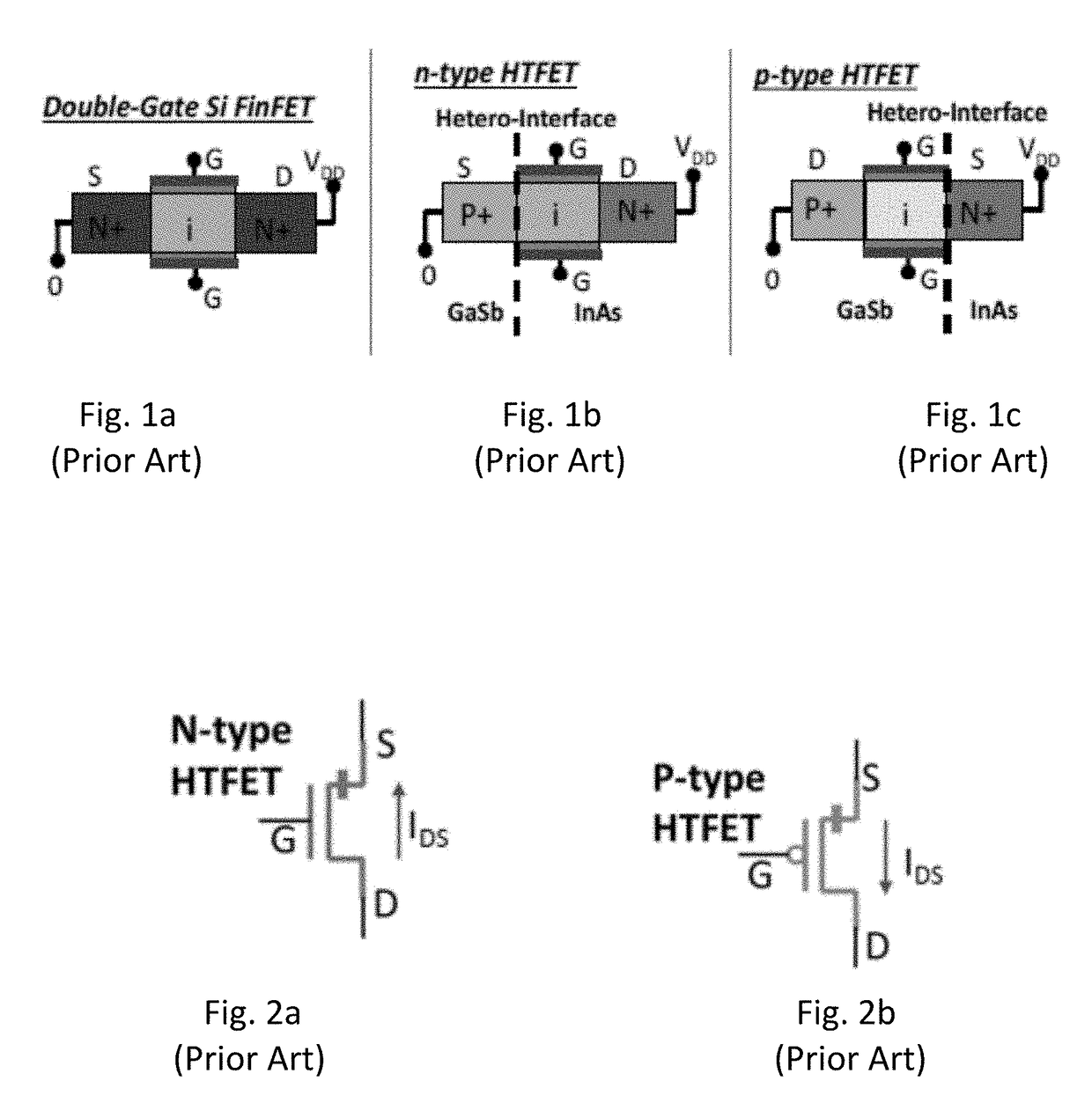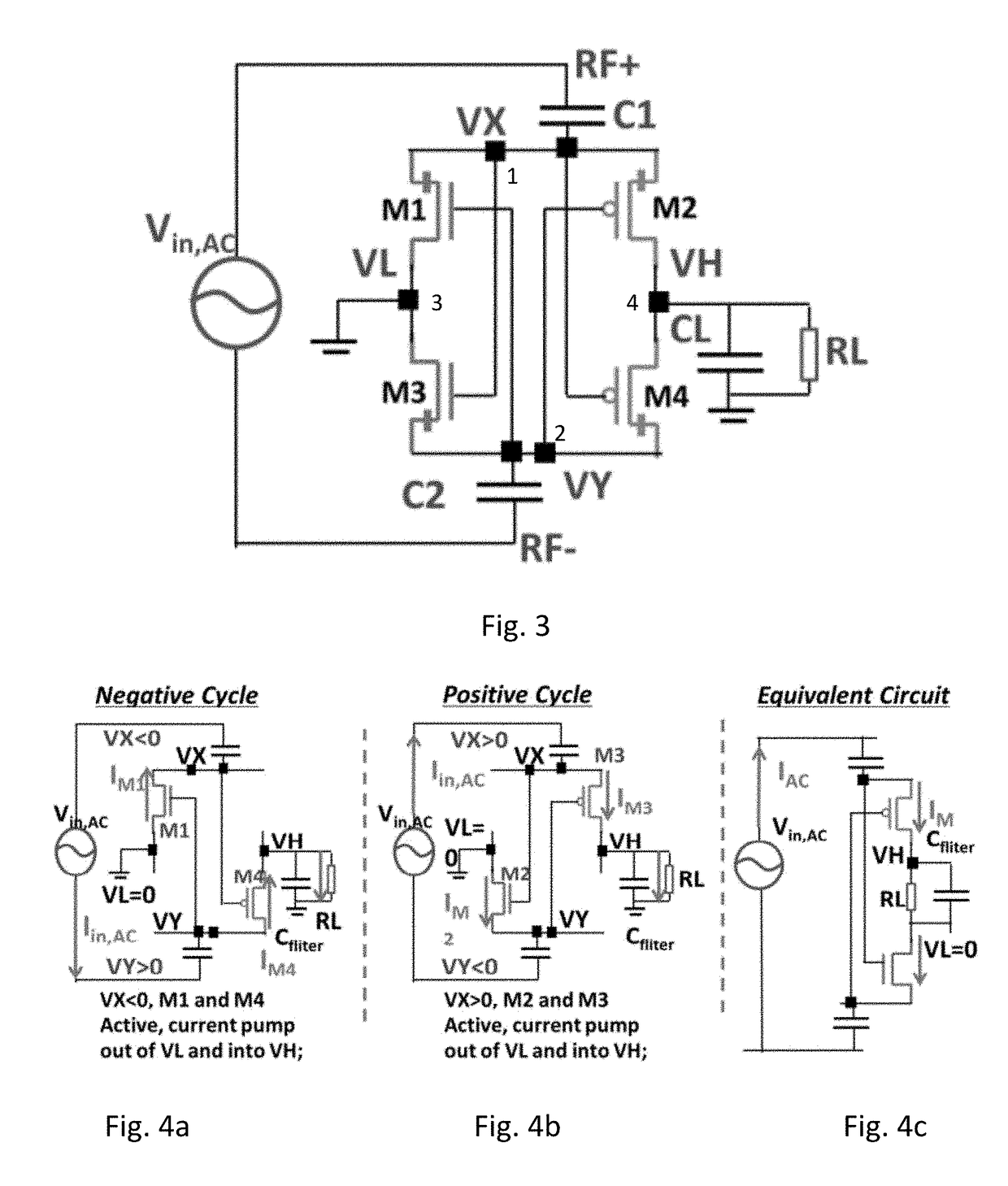Low power nanoelectronics
a nanoelectronics and low-power technology, applied in the direction of transformers, semiconductor devices, inductances, etc., can solve the problems of additional biological infection risk, limited computational capability, and limited operational range of existing rf-powered systems, so as to increase the power efficiency and power efficiency of these components.
- Summary
- Abstract
- Description
- Claims
- Application Information
AI Technical Summary
Benefits of technology
Problems solved by technology
Method used
Image
Examples
Embodiment Construction
[0079]As shown in FIGS. 1b and 1c, a Tunneling Field Effect Transistor (“TFET”) can be seen as a reverse-biased, gated p-i-n tunnel diode with asymmetrical source / drain doping. The reverse biased diode leakage determines the current in the off-state, or Ioff, of the TFET. The on-state is enabled by the gate-controlled band-to-band tunneling at the source-channel junction, and a sub-60 mV / decade steep-slope can be achieved in TFET with desired Ion / Ioff over a low power supply, or VCC, range. Moreover, with the introduction of materials from group III and group V of the periodic table (III-V materials) and a heterojunction, a III-V Hetero-junction TFET (“HTFET”) exhibits improved energy efficiency for below 0.5V VCC compared to the state-of-art CMOS technology. As described herein, these advantages exhibited by the TFET may be used to generate RF-power system components that not only improve the functionalities of the components themselves, but also the functionalities of the RF-syste...
PUM
 Login to View More
Login to View More Abstract
Description
Claims
Application Information
 Login to View More
Login to View More - R&D
- Intellectual Property
- Life Sciences
- Materials
- Tech Scout
- Unparalleled Data Quality
- Higher Quality Content
- 60% Fewer Hallucinations
Browse by: Latest US Patents, China's latest patents, Technical Efficacy Thesaurus, Application Domain, Technology Topic, Popular Technical Reports.
© 2025 PatSnap. All rights reserved.Legal|Privacy policy|Modern Slavery Act Transparency Statement|Sitemap|About US| Contact US: help@patsnap.com



